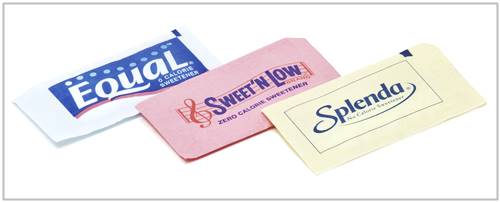Artificial sweeteners may make you fat
The dark side of sugar substitutes
Fact Checked
×All the content published in our website is fact checked to validate its accuracy.
Visit our guidelines web page to learn more about our strict processes regarding how we review our content's sources: reliable and reputable journals, media websites, universities, colleges, organizations, and professionals.
Our articles are based on scientific evidence, and the references are included in its footnotes, which are clickable links to sound scientific papers.
First published: 22.Dec.2018
Overview. Sugar substitute's bitter truth
The downside of sugar substitutes. Health risks associated to artificial sweeteners.>/p>
Sugar substitutes (also known as artificial sweeteners) not only provide a low-calory and sweet sugar-like taste to many foods, they also affect your body and its metabolism.
The $1.15 billion global artificial sweetener market is based on the notion that these products are GRAS, that is, Generally Regarded As Safe for consumption.
But, is this really the case? What are the side effects of these artificial sweeteners? Are they bad for you?
Studies show that by being sweet but lacking calories they disrupt the body's metabolism, promote diseases and make you gain weight.
chronic consumption of a sweet⁄energy imbalanced diet... increases the motivation to eat Wang et al., 2016 (1)
In this article, we will review some scientific papers to learn more about sugar substitutes and their pros and cons concerning your health.
References and Further Reading
(1) Wang QP, Browman D, Herzog H, Neely GG., (2018). Non-nutritive sweeteners possess a bacteriostatic effect and alter gut microbiota in mice. PLoS One. 2018;13(7):e0199080. Published 2018 Jul 5. doi:10.1371/journal.pone.0199080
(2) FDA. Has Stevia been approved by FDA to be used as a sweetener?. Accessed 16.Dec.2020.
(3) Shaoli Li, Jinju Geng, Gang Wu, Xingsheng Gao, Yingying Fu, Hongqiang Ren, (2018). Removal of artificial sweeteners and their effects on microbial communities in sequencing batch reactors. Scientific Reports vol 8, Art. no 3399 21 February 2018
(4) Harpaz D et al., (2018). Measuring Artificial Sweeteners Toxicity Using a Bioluminescent Bacterial Panel. Molecules. 2018 Sep 25;23(10). pii: E2454. doi: 10.3390/molecules23102454
(5) Volker Bornemann, Stephen C. Werness, Lauren Buslinger, Susan S. Schiffman, (2018). Intestinal Metabolism and Bioaccumulation of Sucralose In Adipose Tissue In The Rat. Journal of Toxicology and Environmental Health, Part A, 2018; 1 DOI: 10.1080/15287394.2018.1502560
(6) Pepino MY, (2015). Metabolic effects of non-nutritive sweeteners. Physiol Behav. 2015 Dec 1;152(Pt B):450-5. doi: 10.1016/j.physbeh.2015.06.024. Epub 2015 Jun 19
(7) Qiao-Ping Wang et al., (2016). Sucralose Promotes Food Intake through NPY and a Neuronal Fasting Response. Cell Metabolism, 2016; 24 (1): 75 DOI: 10.1016/j.cmet.2016.06.010
(8) Abott A., (2014). Sugar substitutes linked to obesity: Artificial sweetener seems to change gut microbiome. Nature. 2014;513:290.
(9) Moriconi, E., Feraco, A., Marzolla, V., Infante, M., Lombardo, M., Fabbri, A., and Caprio, M. (2020). Neuroendocrine and Metabolic Effects of Low-Calorie and Non-Calorie Sweeteners. Frontiers in endocrinology, 11, 444. https://doi.org/10.3389/fendo.2020.00444
(10) FDA. Additional Information about High-Intensity Sweeteners Permitted for Use in Food in the United States. Last Updated: 02/08/2018
(11) Duffy VB, Anderson GH., (1998). Position of the American Dietetic Association: Use of nutritive and nonnutritive sweeteners. J Am Diet Assoc. 1998;98:580-7
(12) World Health Organization (2023). Use of non-sugar sweeteners: WHO guideline. Last Updated: May 15, 2023. Accessed: Oct. 15, 2023
About this Article
Artificial sweeteners risks, A. Whittall
©2018 - 2023 Fit-and-Well.com, 15 Oct. 2023. Update scheduled for 15 Oct. 2025. https://www.fit-and-well.com/diet-food/artificial-sweeteners-make-you-fat.html
Tags: microbiome, sweeteners, diabetes, weight loss



